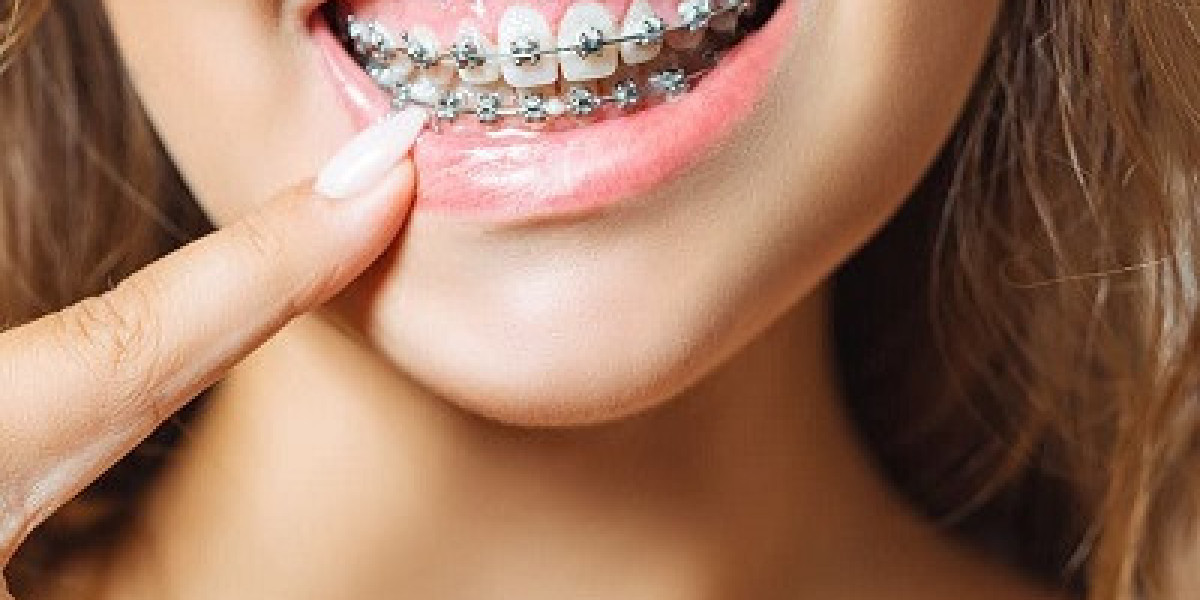When it comes to achieving a straighter smile, understanding the various types of dental braces is crucial. With numerous options available, choosing the right type can make a significant difference in your orthodontic journey. This guide provides an in-depth look at the different types of dental braces available at a reputable Dental Braces Clinic in Dubai helping you make an informed decision for your treatment.
Traditional Metal Braces:
Traditional metal braces are the most commonly recognized orthodontic appliance. They consist of metal brackets attached to each tooth, connected by a wire that applies pressure to gradually shift the teeth into alignment.
Advantages of Traditional Metal Braces:
Effectiveness: Traditional braces are highly effective for treating a wide range of dental issues, including severe misalignments.
Durability: Made from high-quality stainless steel, these braces are durable and can withstand the wear and tear of everyday life.
Cost-Effective: Generally, traditional metal braces are more affordable than other options, making them accessible for many patients.
Disadvantages of Traditional Metal Braces:
Aesthetic Concerns: Metal braces are highly visible, which can be a drawback for individuals concerned about their appearance during treatment.
Discomfort: Some patients experience discomfort or soreness after adjustments, although this usually subsides within a few days.
Ceramic Braces:
Ceramic braces are similar to traditional metal braces in function, but they use clear or tooth-colored brackets to blend in with the natural color of the teeth.
Advantages of Ceramic Braces:
Aesthetics: The primary benefit of ceramic braces is their discreet appearance, making them an appealing option for those seeking a less noticeable treatment.
Effective for Most Cases: Ceramic braces can effectively treat various orthodontic issues, similar to metal braces.
Disadvantages of Ceramic Braces:
Cost: Ceramic braces tend to be more expensive than traditional metal braces due to the materials used.
Fragility: The ceramic material is more brittle than metal, making them susceptible to breakage or chipping under certain conditions.
Lingual Braces:
Lingual braces are attached to the back of the teeth, making them virtually invisible from the front. This option is ideal for individuals seeking a discreet orthodontic solution.
Advantages of Lingual Braces:
Invisible Appearance: Since they are placed on the inside of the teeth, lingual braces are an excellent choice for patients concerned about aesthetics.
Customizable: Lingual braces can be custom-made to fit the unique shape of your teeth, ensuring a comfortable fit.
Disadvantages of Lingual Braces:
Discomfort: Patients may experience initial discomfort, particularly when the braces are first applied.
Cost and Availability: Lingual braces can be more expensive and may not be offered by all orthodontists, so it’s important to consult with a dental braces clinic in Dubai that specializes in this type.
Clear Aligners:
Clear aligners, such as Invisalign, have gained popularity as a modern alternative to traditional braces. They consist of a series of custom-made, transparent plastic trays that gradually shift teeth into place.
Advantages of Clear Aligners:
Aesthetic Appeal: Clear aligners are virtually invisible, making them a popular choice for adults and teens who want to avoid the appearance of braces.
Removability: Unlike fixed braces, clear aligners can be removed for eating, brushing, and flossing, making oral hygiene easier to maintain.
Comfort: Made from smooth plastic, clear aligners typically cause less discomfort than metal or ceramic braces.
Disadvantages of Clear Aligners:
Not Suitable for All Cases: Clear aligners may not be effective for more complex orthodontic issues.
Discipline Required: Patients must be disciplined in wearing their aligners for the recommended 20 to 22 hours a day to achieve optimal results.
Self-Ligating Braces:
Self-ligating braces are similar to traditional metal braces but use a specialized clip system instead of elastic bands to hold the wire in place.
Advantages of Self-Ligating Braces:
Faster Treatment Times: Self-ligating braces often require fewer adjustments, leading to shorter overall treatment times.
Less Friction: The clip system reduces friction between the wire and brackets, resulting in a more comfortable experience.
Disadvantages of Self-Ligating Braces:
Cost: They can be more expensive than traditional braces.
Appearance: While they are available in metal and ceramic, they may not be as discreet as clear aligners.
Choosing the Right Type of Braces:
Selecting the best type of braces for your orthodontic treatment can depend on several factors, including your specific dental needs, budget, and aesthetic preferences. Consulting with an experienced orthodontist at a dental braces clinic in Dubai is crucial for determining the most suitable option for your situation.
Factors to Consider:
Severity of Dental Issues: Some types of braces are more effective for certain orthodontic problems. Your orthodontist will evaluate your case and recommend the best solution.
Lifestyle and Preferences: Consider how visible you want your braces to be and how much maintenance you are willing to commit to during treatment.
Budget: The cost of braces can vary significantly between different types. Make sure to discuss financial options and insurance coverage with your orthodontist.
The Importance of Regular Check-Ups:
Regardless of the type of braces you choose, regular check-ups with your orthodontist are essential for monitoring progress and making any necessary adjustments. These visits help ensure that your treatment plan stays on track and that your braces are functioning as intended.
Maintaining Oral Hygiene:
Maintaining good oral hygiene during orthodontic treatment is critical. Each type of braces requires specific care to prevent cavities and gum disease, which can affect the overall outcome of your treatment. Your orthodontist will provide guidelines tailored to your chosen type of braces.
Long-Term Commitment:
Orthodontic treatment is a commitment that requires time, patience, and adherence to your orthodontist’s recommendations. By understanding the different types of dental braces available and their respective benefits and challenges, you can make an informed decision that aligns with your goals for a healthier, more beautiful smile.
Conclusion:
In conclusion, the world of dental braces offers various options, each with unique advantages and disadvantages. From traditional metal braces to clear aligners, the best choice for you will depend on your individual needs and preferences. By visiting a dental braces clinic in Dubai, you can gain insight into the best options available and start your journey toward a beautiful, straight smile.








